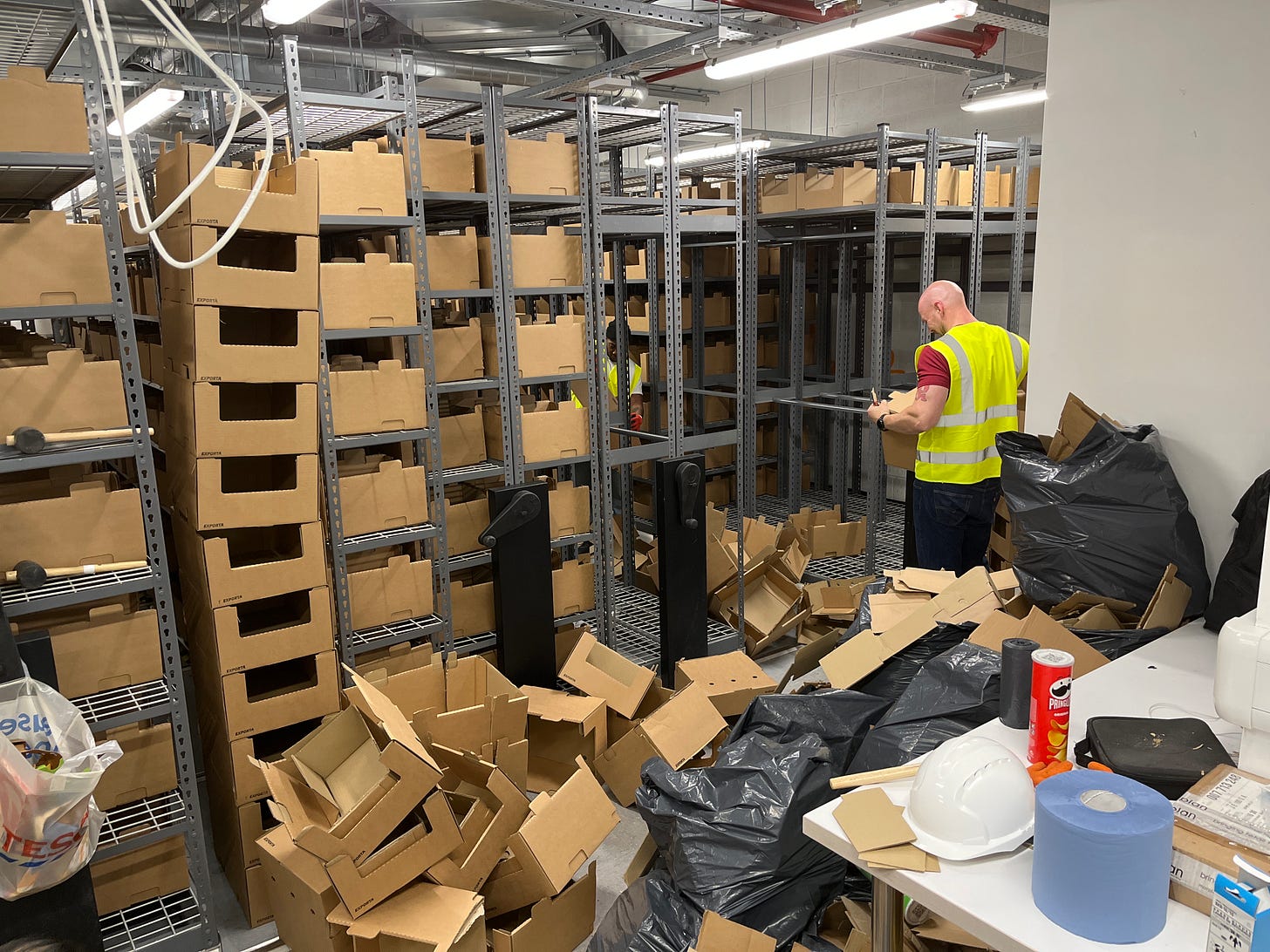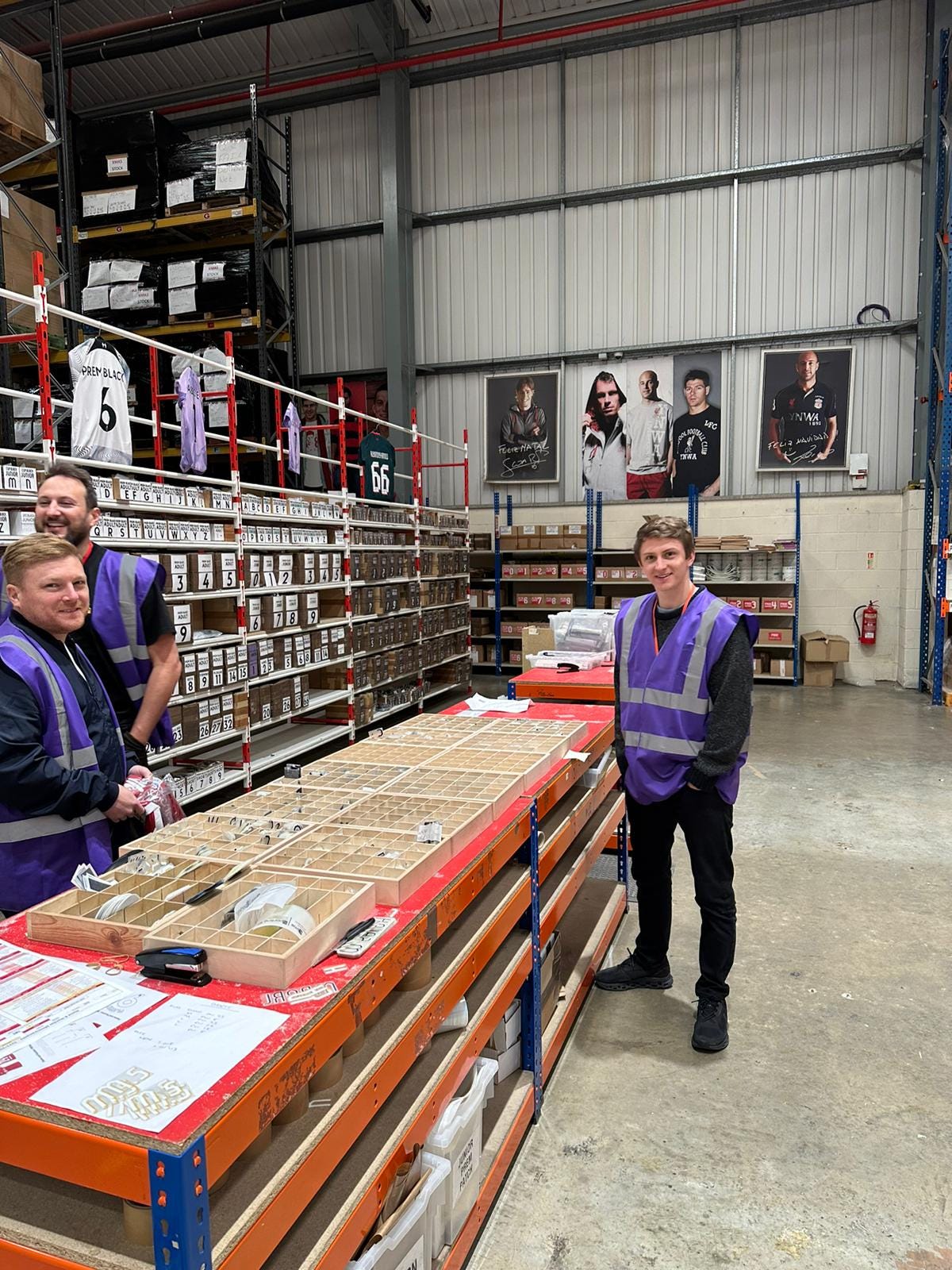Behind the Thinking: Dom Macgowan
From being bored during a gap year to helping some of the fastest growing brands…
Welcome to Behind the Thinking - a series where we introduce each of the Commerce Thinking team, and share the journeys that brought them here.
We’re starting with Dom Macgowan.
Not because his career followed a textbook path, but the opposite: Dom didn’t go to university. He got bored during a gap year. He stumbled into commerce operations almost by accident and, yet, he went on to play a pivotal role in scaling Gymshark’s systems through some of its most chaotic and high-growth years.
We’re sharing his story because it challenges the default assumptions about what high-potential talent should look like. Dom is proof that operational excellence doesn’t always come from degrees or polished CVs - it comes from curiosity, hard work, and leaders willing to back raw talent before it’s “ready.”
If you ask Dom Macgowan how he got into commerce operations and systems, there’s no perfect LinkedIn narrative to explain it. He just figured things out as he went along.
There wasn’t a master plan or grand career move. He was working in a climbing shop, overheard someone complaining about a Gymshark order, and thought, “Maybe I can help.”
That moment took him from reconciling warehouse data to driving major projects at Gymshark, and eventually helping shape the second chapter at Commerce Thinking.
His path is proof that operational talent doesn’t always come from tech-based degrees or product teams. Sometimes it comes from curiosity, pragmatism, and an Excel spreadsheet.
“I literally messaged my parents asking what logistics meant. But I read the job description and thought, yeah, I can probably do that.”
Starting in the Deep End
Dom joined Gymshark in November 2018, a few months out of school. The company was riding its first wave of serious scale with roughly 250 employees, pulling in £200M+ in revenue. Within two weeks, he was in the thick of a Black Friday that would test every system they had.
It was his first job.
At 18, fresh out of school, he was given his first break by Joe Francis, who took a risk on someone with no degree, and no experience. That decision shaped everything that followed.
What followed was four and a half years of being in the engine room of a rocket ship. One that scaled up to over 1,000 employees, crossed the half-billion-pound revenue mark, and achieved unicorn status after investment from General Atlantic.
Along the way, others played a crucial role in accelerating his growth:
Chris Perrins - who mentored him, answered questions, and guided him through the complexities of systems.
Maxime Ossieur - who pulled him into the systems world and became his first real teacher in tech (more to come from him soon, as Maxime joined Commerce Thinking shortly after Dom)
Chris Ormonde - who balanced critique with encouragement, becoming both a challenger and a cheerleader.
Dom was there through all of it, steadily moving from operations triage to systems architecture.
“There were five of us in the systems team when I joined. By the time I left, the tech org had grown to about 120.”
From Manual Fixes to Systems Strategy
It wasn’t a planned move into systems. A team restructure opened the door, and he stepped through it. The departure of a customer support lead meant Dom’s logistics role began to lean toward support work, which didn’t feel like the right fit.
He’d already been spending time with the systems team, partly thanks to overlapping workstreams, and partly thanks to the odd climbing trip with their manager, Maxime. So when a junior systems admin role opened up, he jumped at it.
From that point on, Dom focused on systems that made things actually work - not just in theory, but in practice. Inventory logic, order flow, returns, POS integration, distribution centre migrations.
These projects weren’t glamorous. They were complex, technical, often chaotic but crucial to keeping the business moving.
The Regent Street Chaos - and Why It Was Great
One of the defining projects of Dom’s Gymshark era was the launch of its Regent Street store. Dom was a key player in making sure the back-of-house actually worked.
“As with any store launch, it was chaotic. The week before opening, I was basically living in the store.”
Dom helped train the team on Shopify POS, ensured integrations fed correctly into NetSuite, and helped implement a full WMS (warehouse management system) in the store. That’s no small feat when you’re managing 50,000+ units for a brand new sales channel to the business.
“It ended up being one of the best weeks of work I’ve ever had. Chaotic, but we got it launched.”
Inventory, Returns, and Other Hidden Growth Levers
Much of Dom’s work at Gymshark was behind the scenes, deep in the systems that rarely get attention, but make all the difference when a brand starts to scale. This included some major projects:
Helped implement distribution centres - including in the UK, Australia, across Europe, and three in the US - to support international growth and seasonal peaks.
Played a major role in rebuilding the returns platform for both the UK and US - improving a part of the experience that’s hard to get right and even harder to scale.
Worked on a six-month project to clean up and standardise product codes (SKUs), helping align inventory and reporting across 14 Shopify stores and six global warehouses.
Played a key role in testing and using a custom-built inventory system, built specifically to solve challenges that existing platforms couldn’t handle.
Solving issues in real time - not just logging them - became a core part of his role.
“Most people in ops roles don’t get into the systems side. I just hated being the person saying something was broken, I wanted to be the one who fixed it.”
Leaving Gymshark, Finding Commerce Thinking
By 2022, the pace at Gymshark had changed.
“It was a different company by then - and fair enough. But I was ready to build again.”
Dom got connected to Commerce Thinking through Chris Ormonde, a former Gymshark colleague. Chris introduced him to Luke Hodgson. Despite a shared Gymshark history, Dom had never worked with Luke or co-founder Andy. But their thinking aligned, and they were rebuilding.
Dom became the first hire in phase two of Commerce Thinking, starting with projects for Represent and Oh Polly, and quickly getting back into the systems he knew best: Shopify, NetSuite, 3PLs, and the custom workflows connecting them all.
What Dom Brings That’s Different
Dom doesn’t come in with glossy slide decks or buzzwords. He pulls up the report, gets into the data, finds where things are breaking, and offers clear, practical solutions - both immediate and long-term.
He takes what’s happening inside the systems and translates it into clear, actionable decisions for the business. He doesn’t need a roadmap to start. He just needs system access.
“Most people try to solve problems too high up the stack. But if your Warehouse Management System isn’t configured properly or your SKU logic is broken, nothing else is going to work.”
Dom’s Advice for Early Operators
He keeps his career advice simple. For people just starting out, here’s what he suggests:
He keeps his career advice simple. For people just starting out, here’s what he suggests:
1. Learn Excel properly.
“Every company uses Excel. If you can do more than basic formulas, you’ll be faster at solving problems.”
2. Automate what you can.
“If you’re pressing buttons for a living, figure out how to stop/automate it. The company will give you more complex stuff to work on if you show you can think ahead.”
3. Say yes before you're ready.
“At Gymshark, I got projects I’d never done before. But people backed me to figure it out. That built confidence and trust.”
4. Bridge teams.
“Being the systems person who talks to business stakeholders means you know where the real problems are. Having the ability to translate business talk into tech jargon is invaluable.”
5. Find people who stretch you.
“I had mentors at Gymshark who gave me stuff that challenged me. Giving me projects and tasks that I hadn’t done before made me learn fast.”
The Role of Leadership
Dom’s journey wasn’t just about hard work and curiosity - it was also about leaders who saw potential and gave him chances that others might not have.
Dom’s story is a reminder to leaders and operators: developing young talent is just as important as hiring experienced professionals. More brands should be building pathways into systems and ops roles, rather than waiting for a “finished product” to appear on the market.
His rise shows what can happen when curiosity meets opportunity, and when leaders are willing to invest in raw talent before it looks “ready.”
What’s Next
Dom isn’t interested in titles or status. He is passionate about solving real problems for brands that are growing fast. He understands where systems tend to break, because he’s been in the middle of scaling them: migrating infrastructure, replatforming tools, and reconfiguring processes to keep things moving.
Now, he helps others avoid those mistakes.
“Everything I know, I learned because something broke, and I didn’t want it to break again.”
If your post-purchase operations are under strain, your tech stack is struggling to keep up, or your customer service team is dealing with issues that shouldn’t be happening, Dom is the person you want examining your systems.
Working with Dom, don’t expect a big presentation but a hands-on approach and a determination to get things working.






